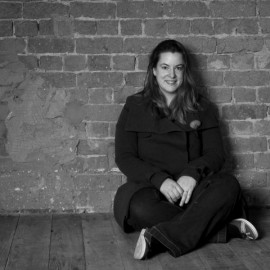Motion Disabled
Motion Disabled is a digital exploration of the bodies of people who are physically different.
Motion Disabled is a digital exploration of the bodies of people who are physically different.
Lilah Fowler, tube, dimensions variable, aluminium, 2011. Courtesy of the artist and Bold Tendencies.
Exhibition, residency and bursary opportunities for artists across the UK and beyond.
Critical commentary and contextualisation of contemporary art exhibitions across the UK and beyond. Guest selected each month from the wealth of user-generated reviews uploaded to Interface. This month’s guest selector is Maria Fusco. You can read all the reviews in full at www.a-n.co.uk/interface.
When faced with challenging times and a scarcity of resources, it is understandable that our instinct might be to retract and take fewer risks.
I wanted to let you know that this year marks the beginning of a new era for Aspex. We will continue to provide activities and services to artists, but without using the ‘ARC’ brand.
I wish to correct the impression given in Jon Wakeman’s piece about All Points North (‘Debate’, a-n Magazine, December 2011/January 2012) that Axis was responsible for ‘driving’ the project.
Glass, textiles and paving blocks by artists Susan Kinley and Steven Follen, commissioned by Crawley Borough Council and funded through a Section 106 agreement, were recently installed in the Bewbush area of Crawley, West Sussex as part of the Heart of Bewbush Neighbourhood Improvement Masterplan.
Whilst public art is distinctly ‘out of favour’ with Arts Council England cutting agencies as part of making savings, it’s interesting to see Creative Scotland taking a rather different tack.
With funding initially awarded in May 2010, the Skills for the Future training scheme from the Heritage Lottery Fund is offering paid training opportunities in museum and heritage settings across the UK.
Construction Gallery in Tooting opened its doors on 18 January with an ambitious site-responsive work by Alistair McClymont, and works by the project’s first residency artists Sam Robinson and Rebecca Lucraft.
Who is moving where this month.
Alan Dunn, James Thompson (Tomo), Robyn Woolston and The Drawing Paper’s Jon Barraclough and Mike Carney have been revealed as the shortlist for the 2012 Liverpool Art Prize when it returns for its fifth successive year.
As part of its Strategies for Survival programme, East Midlands Visual Arts Network is holding a series of roadshow events across the region, presenting an opportunity for new and prospective members to engage in critical discussion, to exchange ideas and information, to meet friends and make contacts, and to find out more about EMVAN and its future programme of activity.
Invited by W.A.G.E to kick-start their partnership with Artists Space – exploring potentialities for artists’ self organisation in New York – artist, economist and sociologist Hans Abbing presented a curious and ultimately frustrating case for … I’m not sure what.
“These are dangerous times for people and for our world of arts values … Uncertainty can cause us to be safe, edit complexity, be secretive, conservative” says Susan Jones in her provocation ‘Where is the place for art?’
Cara Courage examines the evidence about the gender imbalance in the arts workforce and asks whether it’s really down to women wanting to ‘have it all’.
Frances Lord pulls together themes and strands that emerge from sixteen newly-commissioned interviews, which reflect the sheer diversity of working practice within the applied arts. From the a-n Collections series. Downloadable pdf. [size 433KB]. Requires pdf reader.
Presentation for the third Creative Regions seminar at the University of Birmingham 23-24 September 2009, by Emilia Telese, Artists’ Networks Coordinator, a-n The Artists Information Company. Telese’s paper explores issues of national art strategy, social geography, politics and professional practice related […]
Charlotte Frost reports from the international conference of ISEA (Inter-Society for the Electronic Arts) in Istanbul.
This month, Interface editor Rosemary Shirley’s selection highlights recent visual arts activity in the north of England, showcasing both the variety of artistic activity in the region and wealth of user-generated writing by contributors to Interface.
The continued economic doldrums and uncertainty in public funding make it more important than ever for artists to find ways to make and save money. So here are some tips – old and new – from the a-n community.
A survey of commissioning projects and public art consultancies around the UK.
Ruth Ben-Tovim and Anne-Marie Culhane discuss two collaborative projects that focus on exchange, community and participation.
Andrew Bryant on what Projects unedited blogs tell us about artists’ practices and concerns today.












